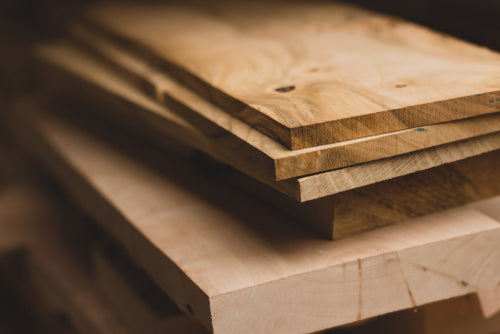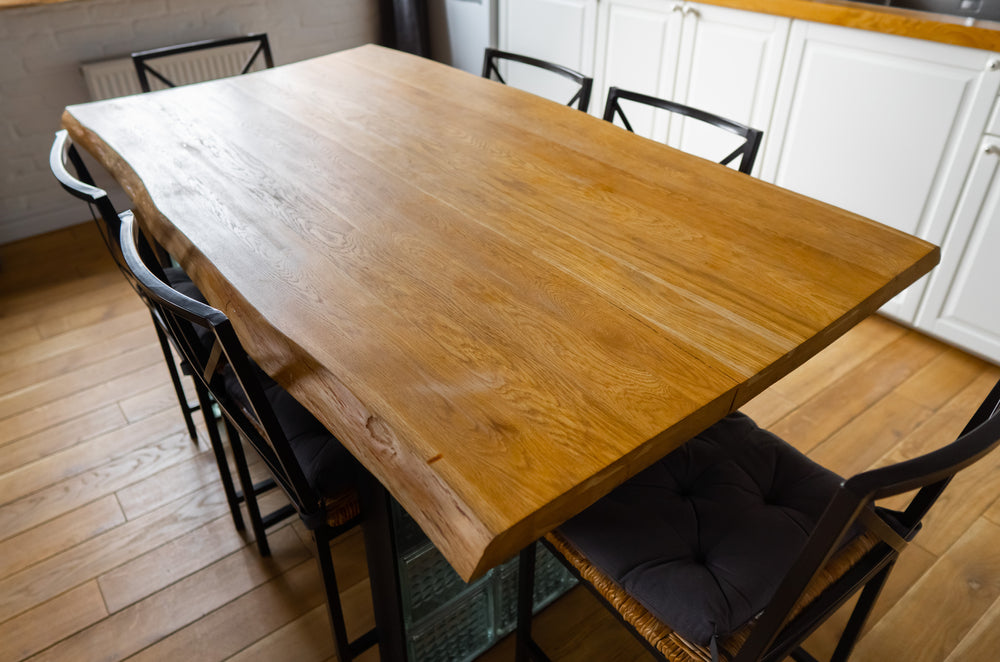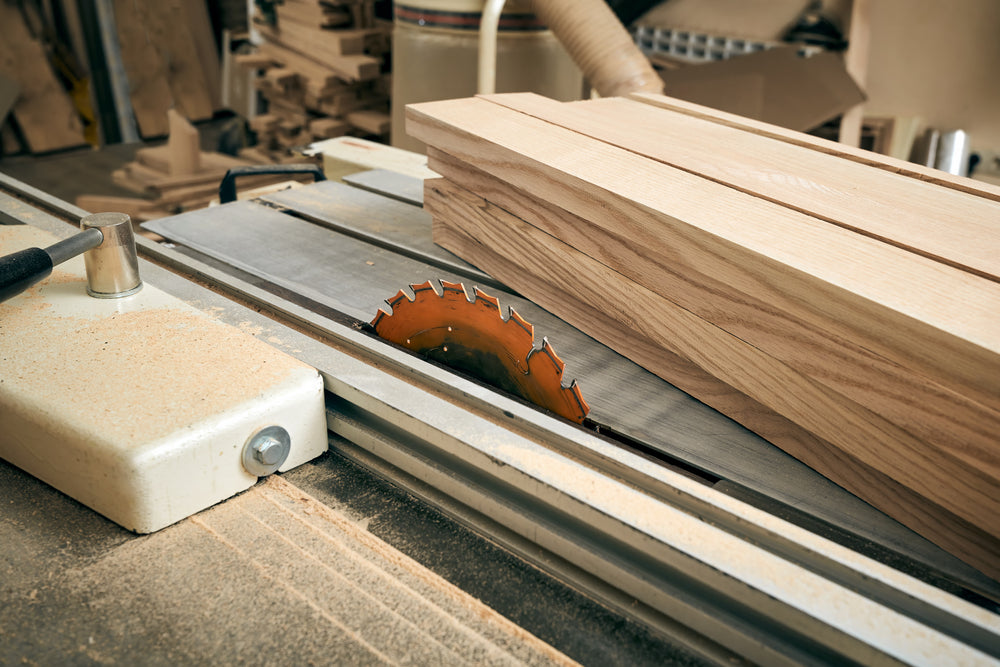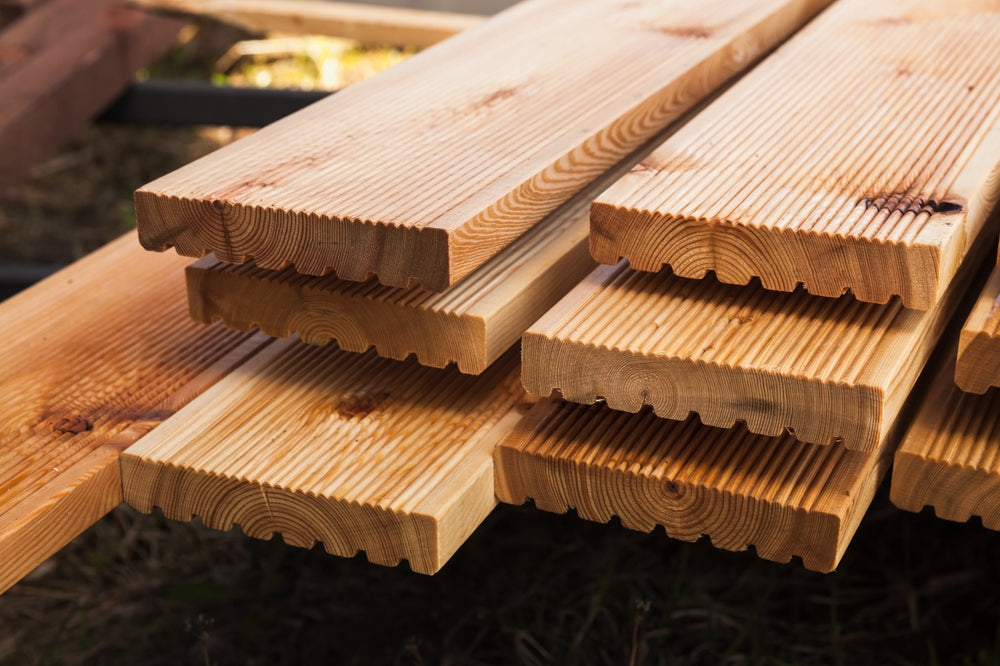There’s some industry terminology to wrap your mind around when understanding lumber sizing. If you place an order of rough cut lumber, the actual board measurements may differ from your expectations – but there are logical reasons for this.
So what does lumber sizing mean, and how do rough cuts compare to finished dimensions?
Nominal vs. Actual Dimensions
Lumber is often referred to by its nominal dimensions – that is, the dimensions to which it was cut before drying, planing, or finishing. So when we refer to a piece of lumber as a “two by four” (2x4) - that means it was cut to be 2” thick by 4” wide – not that it’s that size when you buy it from the store. Builder grade 2x4’s actually measure 1.5” x 3.5” when you buy them at a lumber yard.
Premium grade lumber, such as the kind we offer at North Castle Hardwoods, is sometimes sold the same way. Our 8/4 thick stock, for instance, measured 8/4 thick – that is, two inches – when it was cut. But after drying and finishing, it measures about 1 and 13/16 inches (1.813”) thick.
So, in this example, the “nominal” dimension is 8/4, but the “actual” or “finished” thickness is 1.813”.
At North Castle Hardwoods, we have very tight tolerances on our dimensioned lumber products. This means that, if you buy a piece of lumber that we say will be finished to 13/16”, the actual thickness of that lumber will be within a 1/32” margin of 13/16”.
What do the terms 8/4, 6/4, 5/4, or 4/4 lumber mean?
The terms 8/4, 6/4, 5/4, and 4/4 refer to rough cut lumber thickness.
Lumber thickness is measured in quarters of an inch. So 4/4 lumber is cut to be 4/4 of an inch thick – or 1 inch thick. 6/4 is rough cut to 1.5 inches thick.
8/4 and 6/4 are often considered “thick stock” lumber. Anything with a thickness of ½” or below is considered “thin stock.”
See the chart below.
|
Designation |
Rough Cut Thickness |
Finished Thickness (Approx) |
|
8/4 |
2 inches |
1.813 inches |
|
6/4 |
1.5 inches |
1.313 inches |
|
5/4 |
1.25 inches |
1.063 inches |
|
4/4 |
1 inch |
0.813 inches |
These terms have nothing to do with the length or width of lumber. 4/4 boards can be cut to any length or width. It’s important to keep in mind that the length and width dimensions listed on lumber for sale may be nominal or actual.
Rough Cut vs. Finished or Dimensioned Lumber
So when you’re buying lumber or calculating how many board feet you will need for a woodworking project, it’s crucial that you know whether the boards you are buying are being sold with nominal (i.e. rough cut) or finished dimensions.
Check whether the lumber you’re buying is sold as S2S, S3S, or S4S.
S2S and S3S lumber has been surfaced to an exact dimension on two or three sides. The other sides, those that aren’t surfaced, are left rough and can vary in their exact dimensions, often up to ½” or more. The length of the board can also vary up to an inch or two. Check the seller's website for exact details, since different mills have different tolerances.
Here at North Castle Hardwoods, we call our S4S lumber “dimensioned” hardwood, because it has been planed or surfaced on all four sides, so you know nearly exactly the thickness and width of the board you are getting. All four surfaces of the board are straight and ready for use in a project without further planing.
Buying S4S lumber doesn’t mean you won’t have to cut the board at all for your project, since widths and lengths have tolerances of ½” to 1”. But you definitely won’t get less wood than you ordered, because you can calculate based on actual (finished) dimensions, rather than rough dimensions.
Why are finished dimensions of a board smaller than nominal dimensions?
If you calculate how much lumber you need for a project based on rough cut dimensions, you may come up short.
When wood is dried, it loses a huge percentage of its moisture. Depending on the species, green lumber may have more weight in water than in wood mass. Air-dried lumber should be 15-20% water, and expertly kiln-dried lumber has a moisture content of only 6-8%.
While the weight of a board changes with drying more than length, width, or thickness does, these dimensions are also affected. Even after drying, lumber is a natural product, and is prone to atmospheric changes, such as humidity, which affect the size and shape of a piece of wood.
After drying, wood may be planed to create a smooth flat surface, remove imperfections, and/or to standardize sizing. This brings the size of the board down a bit more.
So What is Rough Cut Lumber?
Rough cut lumber is timber that has been sawn but not finished. It’s the wood you will find at the sawmill or lumber yard before it goes off to be further processed. It will likely have saw marks and other imperfections from being cut to size.
Rough cut lumber is less expensive than dimensional lumber because of the lack of processing, milling, and treatment. Its main use is in framing buildings where a fine finish is not required. When the lumber is enclosed within a wall it doesn’t matter what it looks like.
Some woodworkers like the rustic look that rough cut lumber can give. Others enjoy carrying out the milling work themselves to get the right dimensions for their own project. Partly-finished lumber that retains some textural elements left over from the band saw can suit some woodwork projects.
We love S3S lumber, because it’s been surface planed on both faces with a straight-line rip on one edge. The other edge is left rough. This gives the woodworker maximum width and thickness to work with, but makes it easier to get straight edges than it is with rough lumber.
Rough cut lumber is often sold by the board foot, as sizes can be irregular. At North Castle Hardwoods, we have tolerances in place to make sure you know what size board you’re ordering. But if you’re shopping at a local mill, always take a tape measure with you so you can be sure you are getting what you came for!
The downside to using rough cut lumber for finished work is that it does take a fair bit of work to get to a point where it is usable. You might use it to put together a shop workbench or a rustic outdoor bench and table set. But for fine indoor furniture, rough cut lumber isn’t the best choice unless you have milling and planing equipment of your own.
What is Finished Dimensional Lumber?
Finished dimensional lumber is what you find on the racks at your local lumber yard or big box DIY store. It’s timber that has been through all the processes required to turn it into a ready-to-use finished product.
It will be planed and squared and cut to specific shapes, from rectangular, to square, to tongue and groove planks. The worst defects have been cut off and left behind. Split, waney-edged, and damaged lumber rarely makes it onto the racks if you buy from a reputable supplier.
As a result, dimensional lumber will cost more than rough cut lumber – but you’re getting a better value.
Which Lumber is Right for Your Project?
Rough cut is cheaper, but it will cost you more time to prepare it for use in woodwork projects.
Pine is easier to mill at home, as it is a softwood.
Hardwoods such as oak, cherry, or maple are much harder and require much more specialist tools. Hardwood can be quite unforgiving, especially if your tools aren’t as sharp as they could be. So if you’re shopping for hardwood, especially, you’ll benefit from buying finished or partially finished boards. The moisture content will be consistent, and the size and performance will meet your expectations.
At Northcastle Hardwoods, the quality of the dimensional lumber is never in question. Pay us a visit, or order online today.





